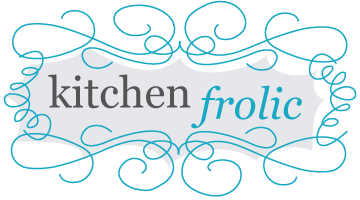 title: The Dirty Apron Cookbook
title: The Dirty Apron Cookbook
author: David Robertson
publication date: October 14, 2014
publisher: Figure 1 Publishing
Cooking is a return to home, friends and family – the comfort we all crave when the rest of the world proves a challenge.
— David Robertson (The Dirty Apron Cookbook)
Written by David Robertson, the founder of the Dirty Apron Cooking School and Delicatessen in Vancouver, British Columbia (Canada), The Dirty Apron Cookbook promises “delicious recipes…for satisfying everyday meals and foolproof dinner party dishes”.
I’ll admit – not being from the west coast, I had never heard of the Dirty Apron Cooking School, but I was eager to get my hands on this cookbook and see how it compared to books written by celebrity chefs or bloggers.

lemon basil crepes
the first nibble:
One of the first things that this book included that made it feel like a real instructional cookbook was the reminder about the importance of Mise En Place. Even though I’m just a homecook, I still like to lay out my ingredients beforehand. It makes me read the recipe more than once and I find it so much easier to reach for a little bowl of ingredient that’s already been measured out than trying to figure out the measurements while things are already boiling, mixing or heating up.
Many cookbooks have guides that tell you what you should stock in the kitchen (or pantry or refrigerator) and this one is no different. However, the ‘guide’ in this book is only a short list that takes up less than half a page – quick, simple and focuses on the most important things to have.
On my first pass through the book, five recipes that jumped out as ‘must try’:
- Ginger-Soy Tuna Poke on Pressed Avocado, pg. 81
- Macadamia Nut-Crusted Mahi Mahi, pg. 97
- Crab Cannelloni, pg. 105
- Hoisin-Glazed Ribs, pg. 126
- The Dirty Twixter Bars, pg. 144

moroccan mimosas
the nitty-gritty:
number of recipes (as stated by book): “more than 80 signature recipes”
recipe list? Yes, at the start of each chapter, there’s a list of recipes contained in that chapter
table of contents: Very simple Table of Contents categories (as you would expect from a cooking school book)
photography: The book is filled with lots of full-page photos, beautiful shots of fresh ingredients and step-by-step photographs for a few of the recipes (I wish there were more of these step-by-step photos – they are so helpful and rarely seen!).
The photos tend to be quite large, but the colours aren’t so intense or bright that they overpower the writing. Instead, the photographs are a really great complement to the recipes, and the large number of photos that focus on the ingredients remind cooks how important fresh ingredients are to a good meal.
photo to recipe ratio*: out of 73 total recipes**, 48 recipes had at least one accompanying ‘finished dish’ photo or step-by-step photo (photo : recipe ratio = 1 : 1.5)
notes:
* this is a manual count, so numbers may be slightly off due to human error (mine)
** only ‘main’ recipes are counted – recipes that appear as part of another dish are not counted
recipes:
– separate ingredient list? yes
– serving info given? yes
– prep/cook time given? no
– recipe format: paragraphs
As would be expected from a cooking school cookbook, the recipes are the real stars here. Well laid out and clear, the recipes are easy to follow and written in a simple, concise language. The recipes don’t feel cluttered or complicated.
A couple of the recipes are actually made up of more than one recipe, so you can take the sauces or sides and use them separately (for example, the Caramelized Onion and Goat Cheese Tarts with Arugula-Walnut Pesto – the pesto recipe is clearly defined so that you can use it for other dishes too).
There are chef’s notes throughout the book, offering tips, tricks and other useful hints for almost every recipe.

okonomiyaki
the last bite:
Don’t be fooled by the fact that this is a cookbook put out by a cooking school. This isn’t a reference book or a ‘basic techniques’ book – it is a great cookbook with both simple and classic recipes that will impress any dinner party group.
Besides the recipes, what really made this book a great find for me was the pages of techniques that are offered throughout the book. With useful guides like “How to Poach an Egg”, “Guide to Buying and Cooking Seafood” and a temperature chart for cooking meat, this book is a handy reference guide as well as recipe book.
Besides the easy-to-follow recipes and lovely photos, I absolutely love the tip sheets found in this book. Plus, as soon as I saw the recipe for poke, it went to the top of my list of recipes to try in the new year. All these things combined to make The Dirty Apron Cookbook one of my favourite books of 2014!
Click here to purchase The Dirty Apron Cookbook from The Book Depository (free worldwide shipping) or Amazon.
Disclosure: I received a copy of The Dirty Apron Cookbook from the publisher for review purposes. I did not receive any financial compensation for writing this post and the post was not reviewed by the publisher prior to publication. All opinions expressed are my own. Please read my disclosure policy for more information.
Disclosure: I am part of The Book Depository and Amazon affiliate programs and the product links shared in this post are affiliate links – if you click them and purchase something, I will receive a tiny commission fee (at no extra cost to you) which helps me keep this site running. Please read my disclosure policy for more information.





